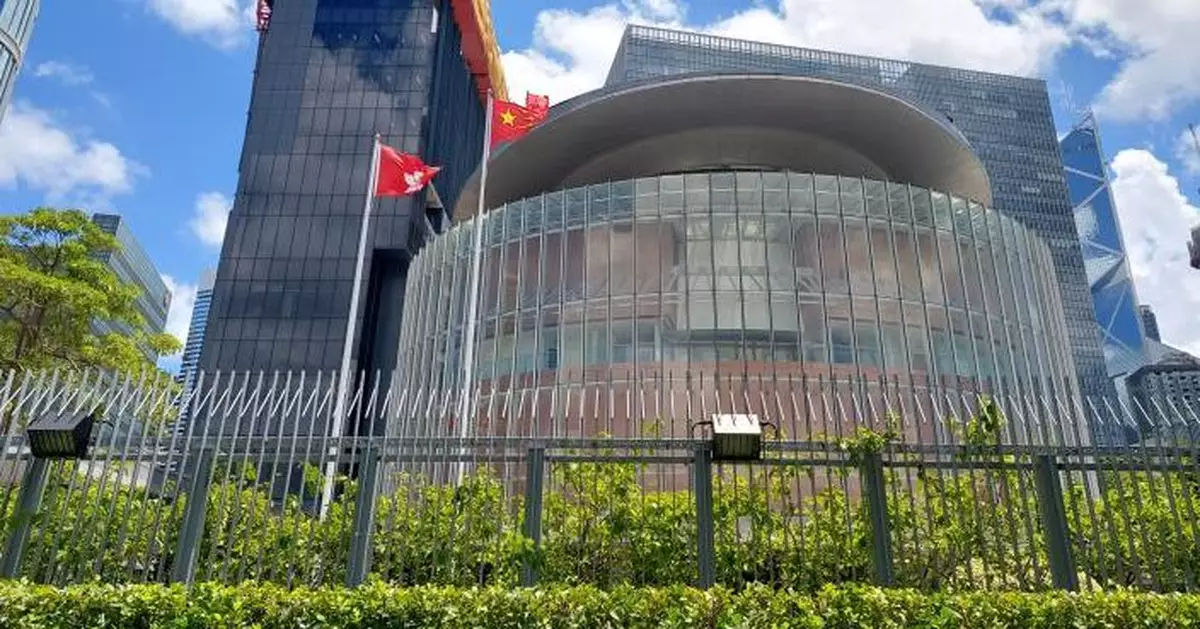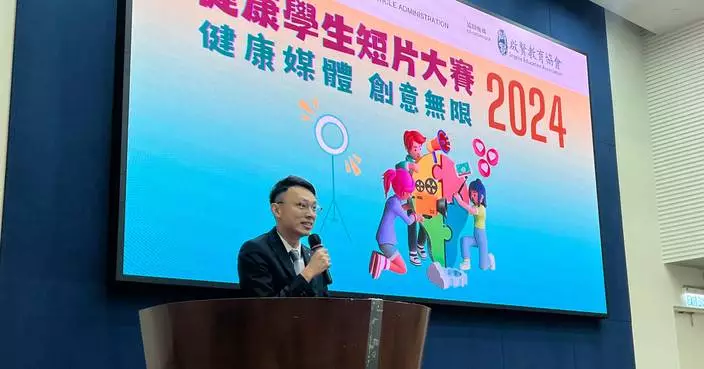Government takes action to address road subsidence issues in hong kong amid extreme weather concerns - legislative council receives detailed response from secretary for transport and logistics
Following is a question by the Hon Kenneth Lau and a written reply by the Secretary for Transport and Logistics, Mr Lam Sai-hung, in the Legislative Council today (June 26):
Question:
It has been reported that during the onslaught of tropical cyclone Maliksi on Hong Kong early this month, road subsidence measuring around eight metres by twelve metres in area and around four metres in depth occurred at the junction of Hai Tan Street and Kweilin Street in Sham Shui Po. It has been preliminarily assessed by the Government that one of the causes of the road subsidence incident may be soil erosion intensified by the heavy rains early this month. In addition, a number of road subsidence incidents also occurred in Hong Kong when the Black Rainstorm Warning Signal was in force on September 8 last year, arousing wide public concern. In this connection, will the Government inform this Council:
(1) of the following information in respect of the road subsidence reports received by the Government in each of the past three years: (i) the number of reports, (ii) the locations of the incidents, (iii) the causes of road subsidence, (iv) the damage, (v) the numbers of persons or underground facilities affected, and (vi) the remedial and follow-up measures taken;
(2) whether the Government has carried out regular inspections of the underneath of roads across the territory over the past three years to prevent sudden occurrence of road subsidence; if so, of (i) the number of inspections in each year, (ii) the inspection locations, (iii) the inspection results, and (iv) the situations of the follow-up actions taken on the roads with underground distress; if not, the reasons for that;
(3) as it has been preliminarily assessed that the road subsidence incident early this month was caused by soil erosion intensified by heavy rains, and rainstorms have become increasingly frequent amid extreme weather in recent years, of the measures taken by the Government to prevent sudden occurrence of road subsidence;
(4) in respect of road construction in new development areas (e.g. the Northern Metropolis), of the measures put in place by the Government to strengthen the condition of the underneath of roads and underground conduits, so as to minimise road subsidence caused by soil erosion or water mains bursts amid extreme weather; and
(5) whether it has studied if there are early signs of road subsidence and educated members of the public about the actions they should take when unusual settlement of road surfaces is noticed?
Reply:
President,
Generally speaking, obvious depression of road surface (i.e. road subsidence) is related to the loss of underground soil and water, which makes it difficult for the road surface to support the weight of passing vehicles. According to the records of the Highways Department (HyD), the main causes of loss of soil and water include: (a) damage to underground pipes (e.g. water mains and drainage pipes), resulting in soil and water flowing into the pipes through cracks and being carried away; and (b) improper handling of foundation works in nearby roads (in particular those involving deep excavation and lowering of groundwater level), resulting in soil and water of the road base flowing into the excavation area of the works. In addition, if the fill materials are not properly backfilled and compacted after road excavation works, the road surface may subside as a result of settlement of the underlying soil after being driven over by vehicles. If the road base is in normal condition, rainstorms per se will not cause road subsidence.
In consultation with the Development Bureau and relevant departments, my reply to the various parts of the question raised by the Hon Lau is as follows:
(1) According to records, the HyD received a total of 52 cases of road subsidence on public roads between 2021 and 2023. The relevant departments had duly reinstated the damaged road surfaces, underground pipework facilities (e.g. water mains, drainage pipes, gas pipes, electricity cables, etc) and other related facilities (e.g. railings, traffic signs, etc) involved after the incidents. Most of the cases in which the HyD assisted in the reinstatement of road surfaces were completed within two days. Among the 52 cases of road subsidence mentioned above, 39 cases (about 75 per cent) were confirmed to have been caused by damaged underground pipework facilities or underground works of roads in the vicinity after investigation. Details of the cases are set out in the Annex.
(2) to (4) The HyD attaches great importance to the repair and maintenance of public roads and ancillary road facilities under its purview. It regularly deploys staff to inspect all public roads in Hong Kong and carries out road repair and maintenance works in a timely manner, as well as stepping up the inspection before the typhoon and rainy seasons every year in order to keep the roads in good condition.
If the HyD identifies during inspection or receives reports of signs of subsidence on the road surface, it will immediately cordon off the affected road section and inspect the area in the vicinity of the scene. At the same time, the HyD will, where necessary, examine the road structure through excavation of trench pits, and carry out the necessary repair works in conjunction with the relevant departments in accordance with the actual situation as soon as possible, so as to safeguard the safety of road users. The HyD will also, on a case-by-case basis, use indirect non-excavation methods (e.g. ground penetrating radar) to assist in the initial inspection of the underground structures within a short period of time, so as to collect reference information for analysis and assessment. The HyD will continue to keep in view the latest technological developments and introduce suitable innovative techniques in a timely manner to effectively investigate underground structures.
In constructing new roads, works departments will continue to properly fill and adequately compact all fill materials underneath the roads in accordance with the standards set out in the General Specification for Civil Engineering Works published by the Government, so as to prevent settlement of soil underneath the roads or in the vicinity of the underground pipework facilities and at the same time ensure that the underground pipes are properly laid. For roads in newly reclaimed areas, the Government will specify the relevant reclamation methods in the reclamation contracts, and the contractors are required to comply with the relevant engineering standards in carrying out such works. Engineers are also required to make corresponding design considerations for the construction of pipes underneath the reclaimed land during the detailed design stage, so as to prevent loss of soil and water caused by bursting of underground pipes in the event of possible residual normal settlement of the reclaimed land in the future.
To address the situation of damages of underground water mains and drainage channels which may possibly lead to loss of soil and water of road, the Water Supplies Department (WSD) and Drainage Services Department (DSD) have evaluated the risk of damages for the water mains and drainage channels respectively based on their service life, materials, wear and tear conditions, past record of bursts or leaks, the potential impact to the environment, as well as the impact of bursts or leaks for formulation of rehabilitation and replacement programme using risk-based strategy. Besides, the WSD is establishing approximately 2 400 Water Intelligent Network District Metering Areas within the fresh water distribution networks in the territory which can detect and regulate water pressure in water mains to reduce the risk of water mains bursts or leaks. The WSD will also explore the use of advanced technologies such as sonar survey and fibre optics to monitor the water mains and facilitate early detection of leakage. The DSD conducts regular inspection on the drainage pipes using closed-circuit television surveys to facilitate early repair works for damaged drainage channels. Furthermore, the DSD has applied innovative technologies to improve monitoring effectiveness, such as using sonar detection systems to conduct drainage channel surveys and using a spherical underground pipe inspection robot for condition survey in high water level and turbulent flow environments.
In view of the possible loss of soil and water of road base caused by underground works of roads in the vicinity, before carrying out deep excavation or lowering of groundwater level in the construction works, the contractor is required to submit ground movement monitoring and associated precautionary proposals/plans of preventive measures to the relevant regulatory departments of the construction works to ensure that the relevant works will not adversely affect the adjacent buildings and land, etc. The monitoring and precautionary measures should normally cover buildings, structures, land, streets such as footpaths or carriageways within and in the vicinity of the construction site. The proposals/plans have to be endorsed/approved by the relevant regulatory departments before commencement of the construction works. During the construction period, the contractor is required to submit monitoring data to the project consultant/registered building professionals responsible for the works project, and the relevant regulatory departments and other relevant departments from time to time in order to monitor and ensure that the construction works will not adversely affect the neighboring buildings and land, etc.
In addition, to prevent future subsidence of road surface due to settlement of the underlying soil as a result of improper backfilling and compaction of fill materials after road excavation works, the road excavation permits issued by the HyD contain relevant clauses requiring the permittees to properly fill and adequately compact all backfilling materials underneath the road in strict accordance with the standards set out in the General Specification for Civil Engineering Works after completion of excavation, and submit relevant test reports upon completion of the works. If the relevant test results indicate that the above backfilling process has not been properly completed, the HyD will require the permittee to rectify the situation as soon as possible.
Relevant government departments will continue to implement the above measures to prevent road subsidence as far as possible.
(5) Generally speaking, it is not easy for the general public to notice the early signs of road subsidence. However, if members of the public notice any damage to the public roads (e.g. the road surface is uneven or slightly subsided), they may contact the HyD through the 1823 Government Hotline. Upon receipt of such reports, the HyD will send its staff to inspect and check the site as soon as possible and arrange for contractors to carry out suitable repairs according to the actual situation, or request the relevant departments, public utility companies or responsible persons of private works to promptly follow up the matter.










